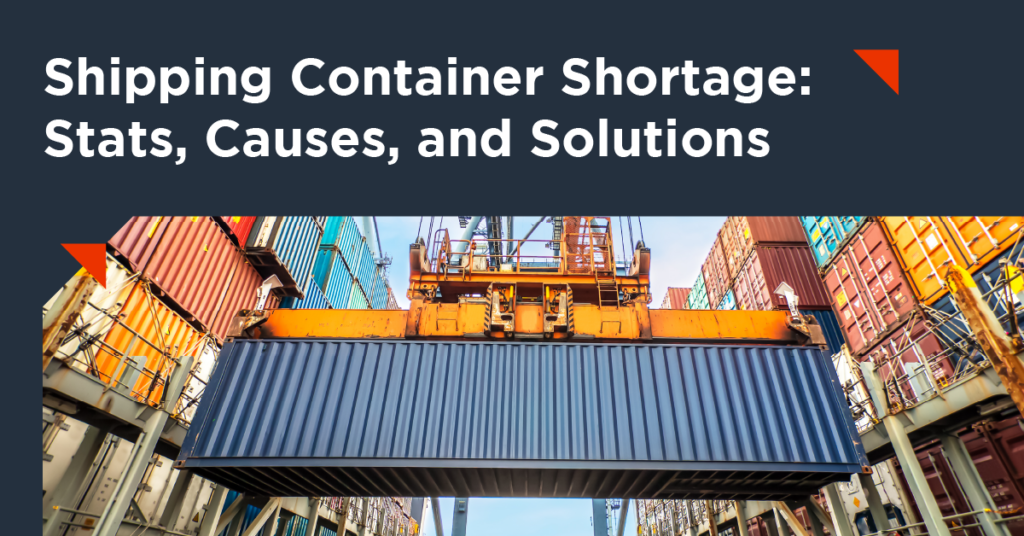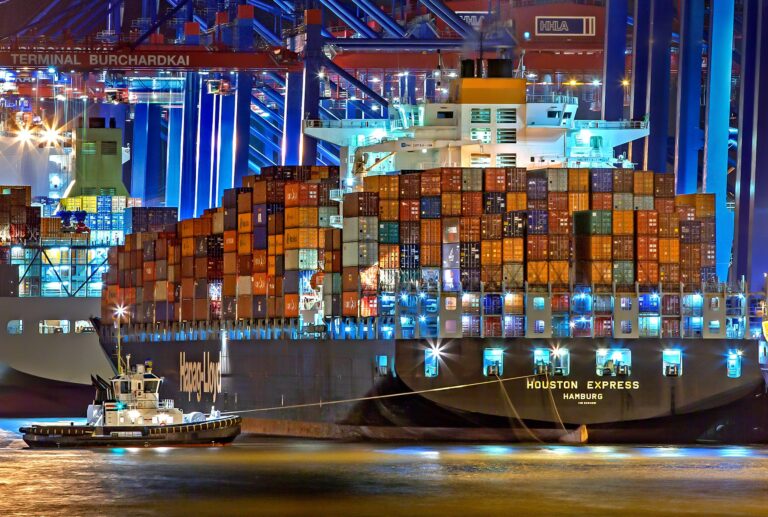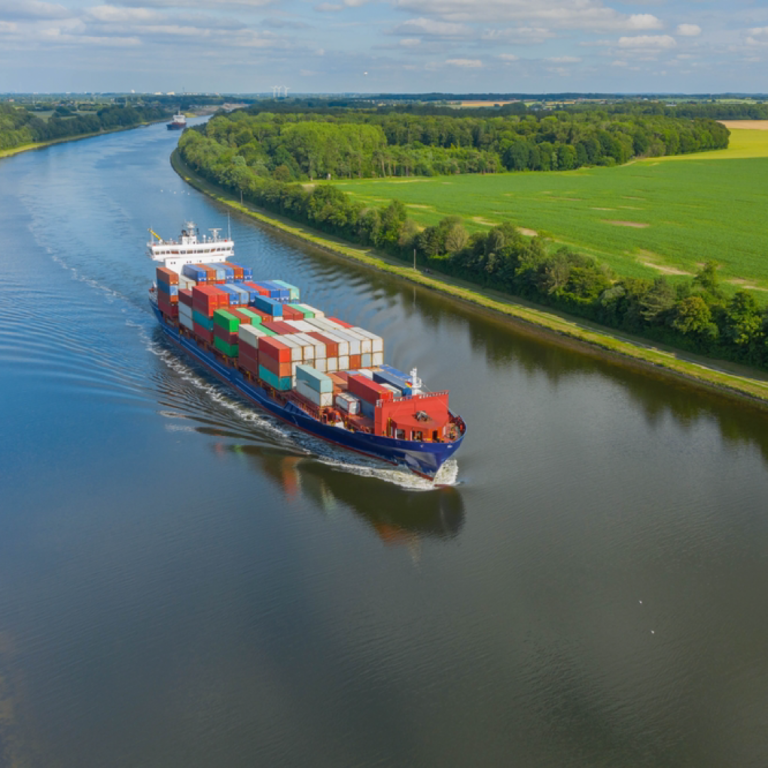
Shipping has impacted your life in one way or another. You don’t have to look far to confirm this. Take a look at your home and see every item placed there. Whether they’re processed goods or raw materials, every product you have is a direct result of both importing and exporting.
Businesses rely on shipping companies to transport products anywhere in the world, ensuring the safety of their goods. The role of shipping containers in global supply chains is irrefutable and is seen as the link between continuous global trade. However, due to recent trends and developments, the world is currently amid a shipping container shortage, with their numbers continually decreasing.
But now you may be wondering, what caused this logistical crisis? Why did a shipping container shortage occur in 2021? To help you out, we’ve created a guide on why container shortages happen and what your business can do to get around!

The Role of Shipping Containers in Global Trade
From gas prices to shipping container shortages, the world has been strongly influenced by the current COVID-19 pandemic. With lockdown restrictions, the world was forced to temporarily halt global market trading. However, as cases decreased and borders opened, you see improvement in the shipping sector. But not completely—at least not yet.
But if the shipping industry is starting to slowly recover from the effects of the pandemic, it begs the question: “Why is there a shipping container shortage?”
Why is There a Shipping Container Shortage?
1. Lockdowns and the logistical impact of COVID-19
When the coronavirus started spreading from Asia toward the rest of the world, many borders and factories closed down. The strict lockdowns put most logistic movement and production to a stop, which became detrimental to the balance of exported and imported goods worldwide.
Consequently, at its peak, the pandemic caused many shipment containers to be abandoned at ports, for there was a lack of manpower to manage the shipments.
2. Limited container availability
As some countries managed to contain COVID-19, borders started opening up again. Asia was the first to ease restrictions. However, the West hadn’t completely recovered, so when shipping containers from Asia started arriving in western ports, they weren’t returning as quickly as expected, limiting the utilized shipping containers.
3. Port congestion and shipping delays
Because ports were holding up shipping containers, not enough were returning to Asia. Due to the lockdowns and restrictions in the West, particularly in North America, ports, cargo depots, and even inland transport lines didn’t have movement.
When factories closed, many companies became understaffed, which caused shipping cargo to pile up in ports. In addition, since the pandemic was still evident, clearing shipments in Customs became more difficult, worsening the congestion that resulted in shipping delays.
4. Shipping vessel numbers have dropped
The understaffing issue caused major shipping vessel numbers to drop. There was a discrepancy in the number of containers moving into North America and those going out.
There was a 40% imbalance in shipping containers, where for every 100 containers that companies sent to western ports, only 40 of them were sent back. At the same time, trade restrictions due to the pandemic led many vessel owners to refurbish their ships, significantly limiting cargo movement.
5. Unprecedented changes in buyer behavior and flow of goods
Products like alcohol, masks, and tissue paper were the goods that sold out the quickest during the pandemic’s peak. This demand paved the way for a change in a buyer’s behavior from services to goods. Unfortunately, even with the increase for these essential items, there was still a shortage in shipping containers due to congestion in ports.
The shipping container shortage became even more evident as the restrictions increased demand for such products. The demand only added to the congestion and delayed the process even more.
What Can My Business Do About the Shortage?
1. Book cargo as early as possible
This global freight crisis gives businesses no guarantee of on-time factories. The best way to get ahead is to do just that. Place your purchase orders earlier than usual to acquire a ready stock of your items, especially your bestselling ones. Other factors to consider include:
-
Production – Delays in your production line can start as early as material sourcing. Remember that different industries vary in lead times and delays.
-
Port delays – Sometimes, port delays can take weeks on cargo containers just stuck at ports. Diligently take this factor into account.
A safe estimate would be to start your production, including booking a cargo shipment, at least two (2) months earlier than you’re used to. Stay on top of shipping news and adjust your timeline as you see fit.
2. Manage client expectations
With the global shipping container shortage, it’s inevitable to experience delays. Make sure to prepare and be ready to answer and manage customer expectations when such a dilemma arises. Here are some practical tips to help you keep your customers’ trust.
-
Be transparent – Be honest about the current situation of your orders and let them know if you can’t meet their expectations. They will appreciate your honesty with them.
-
Be generous with your time estimates – Whether it’s about restocking or product launch dates, it’s better to give ample wiggle room so when you announce a restock sooner than expected, you’ll have happy customers.
-
Prioritize mishaps – Unkept promises of inventory can frustrate your customers. Be flexible and prioritize customers who might want to cancel their orders. Remember that it’s the little things that build trust.
3. Stay on the lookout for shipping forecasts
To help you avoid any surprises in shipment delays, stay updated with shipping forecasts to help you gauge how soon you can restock and if there will be any delays for some of your inventory items. Doing this extra research will help you prepare until the next inventory comes and will also help you give your customers a heads up of the coming delay if there’s any.
4. Diversify your supply chain
While this is easier said than done, researching new facilities and partners to help you meet demands is a great way to maximize your resources. When canvassing, make it certain that your suppliers provide the same quality that your customers already expect from you. They will surely notice the change if your new facility doesn’t meet your previously set standards.
Diversifying your supply chain is great for business because you practice flexibility, which is helpful when dealing with delays and mishaps during production.
5. Focus on your stale inventory
As a response to your bestsellers going out of stock, you might want to focus on your other products that tend to move slower out of inventory. A great way to do this is to promote these products and build engaging campaigns to drive sales. For example, offering rewards when your customers buy early.
6. Place larger orders for more inventory
It’s hard to adapt to increased customer demand and production or shipping timelines. To aid you in this predicament, place larger purchase orders for your factory. Ordering more quantities of your bestsellers ensures you don’t run out of them quickly, allowing you to accommodate more customers.
Furthermore, a big purchase order usually entails smaller fees. As they say, it’s cheaper to buy in bulk instead of single-purchase items.
7. Partner with a reliable freight forwarder
Since you’ll need to work with a freight forwarder to import and export your goods, find a reliable partner you can trust. Look for factors that solidify their reputation, such as reviews and testimonials, years of experience, and scope of service.
Ask the Cargo Experts
The world has yet to fully recover from the effects of the pandemic, but the global trade market is starting to bloom once again. Shipping companies are at the center of this and have been put to the test amid this logistical crisis. Fortunately enough, businesses from around the globe have successfully adapted to the limitations and are starting to thrive little by little.
Now that you better understand the current shipping container shortage, getting around this crisis should be easier. To guarantee the timely and safe delivery of your goods, acquiring reliable freight forwarding services is a must.
As a premier freight forwarder in the Philippines, Dash Cargo logistics offers superb customer service and has over 20 years of experience under their belt. Book our freight forwarding services for a seamless time shipping!



